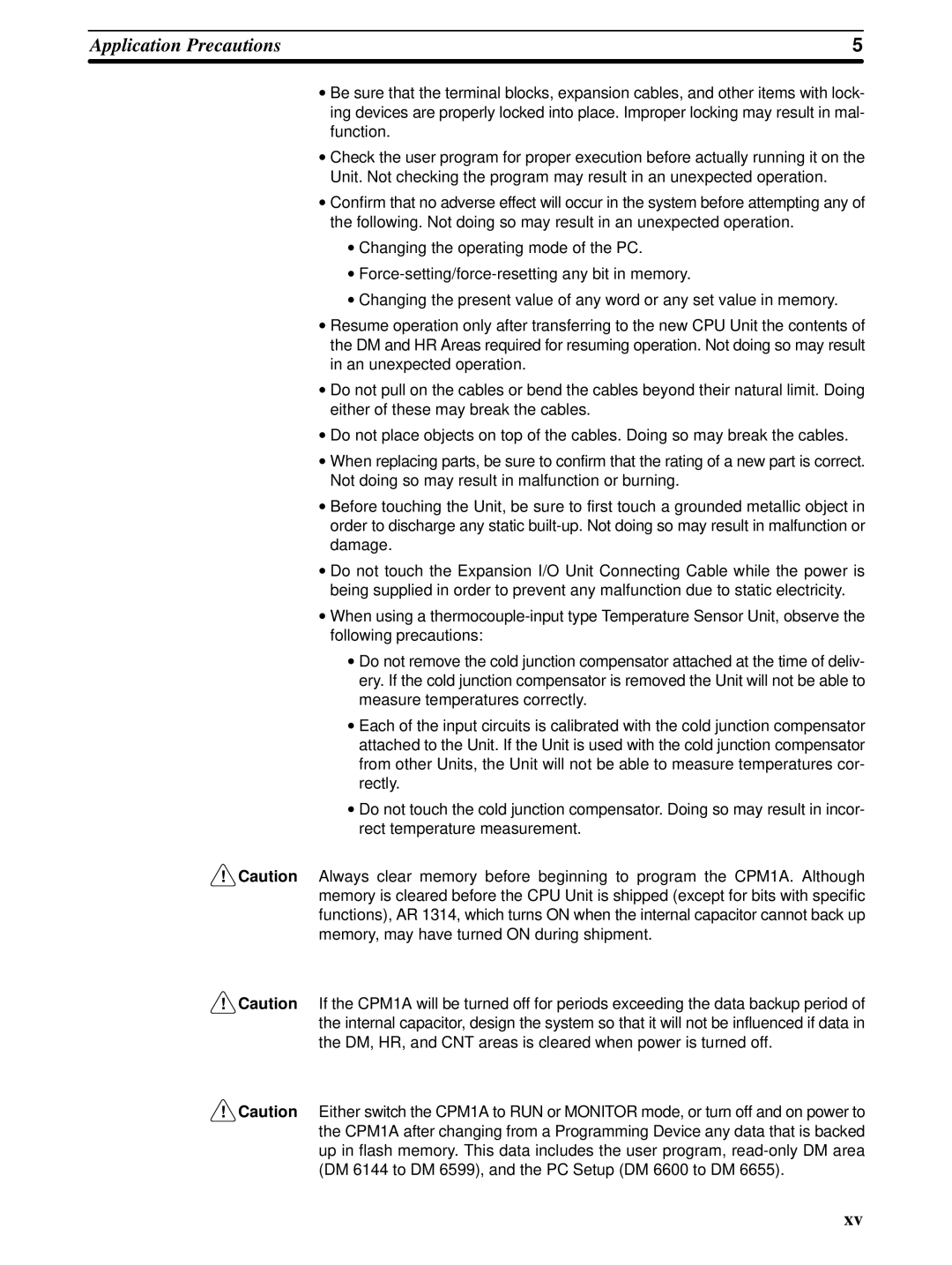
Application Precautions | 5 |
•Be sure that the terminal blocks, expansion cables, and other items with lock- ing devices are properly locked into place. Improper locking may result in mal- function.
•Check the user program for proper execution before actually running it on the Unit. Not checking the program may result in an unexpected operation.
•Confirm that no adverse effect will occur in the system before attempting any of the following. Not doing so may result in an unexpected operation.
•Changing the operating mode of the PC.
•
•Changing the present value of any word or any set value in memory.
•Resume operation only after transferring to the new CPU Unit the contents of the DM and HR Areas required for resuming operation. Not doing so may result in an unexpected operation.
•Do not pull on the cables or bend the cables beyond their natural limit. Doing either of these may break the cables.
•Do not place objects on top of the cables. Doing so may break the cables.
•When replacing parts, be sure to confirm that the rating of a new part is correct. Not doing so may result in malfunction or burning.
•Before touching the Unit, be sure to first touch a grounded metallic object in order to discharge any static
•Do not touch the Expansion I/O Unit Connecting Cable while the power is being supplied in order to prevent any malfunction due to static electricity.
•When using a
•Do not remove the cold junction compensator attached at the time of deliv- ery. If the cold junction compensator is removed the Unit will not be able to measure temperatures correctly.
•Each of the input circuits is calibrated with the cold junction compensator attached to the Unit. If the Unit is used with the cold junction compensator from other Units, the Unit will not be able to measure temperatures cor- rectly.
•Do not touch the cold junction compensator. Doing so may result in incor- rect temperature measurement.
!Caution Always clear memory before beginning to program the CPM1A. Although memory is cleared before the CPU Unit is shipped (except for bits with specific functions), AR 1314, which turns ON when the internal capacitor cannot back up memory, may have turned ON during shipment.
!Caution If the CPM1A will be turned off for periods exceeding the data backup period of the internal capacitor, design the system so that it will not be influenced if data in the DM, HR, and CNT areas is cleared when power is turned off.
!Caution Either switch the CPM1A to RUN or MONITOR mode, or turn off and on power to the CPM1A after changing from a Programming Device any data that is backed up in flash memory. This data includes the user program,
xv
